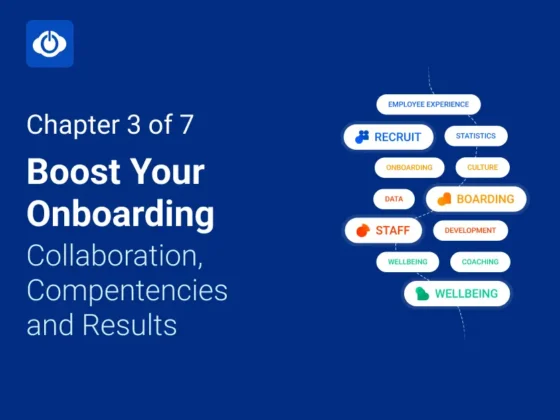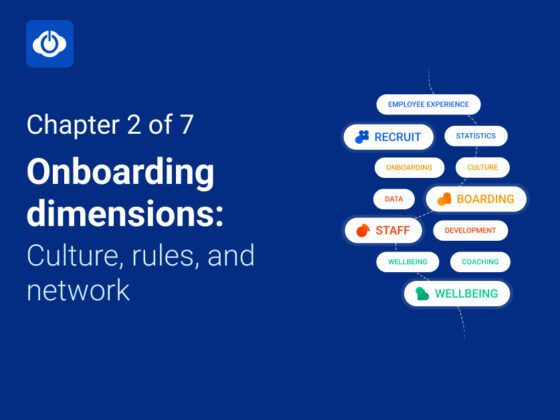Follow the Danish Holiday Act: 11 Steps to Send Your Employees on Vacation Properly
A good, long summer vacation is essential for you and your employees. The brain benefits from an extended break from work-related emails, meetings, deadlines, etc. To ensure the vacation has a real impact, there are several steps you can take to support your employees in taking time off—completely off.
Both researchers and doctors emphasize the importance of allowing the brain to “take a break” to recover, just like the rest of the body. With our 11 steps, you get tips to ensure that you and your employees can complete the most urgent tasks before the vacation, thus disconnecting from work and returning refreshed when the vacation is over—all while complying with the Danish Holiday Act.
Furthermore, rejuvenated employees bring fresh ideas and perspectives to the company in various aspects.
You might also like: Why and How to Celebrate International HR Day 2024
Ensuring Compliance with the Danish Holiday Act
In 2020, the new Danish Holiday Act came into force. In short, the act means:
- Entitlement to 5 weeks of vacation: The Holiday Act ensures all employees the right to 5 weeks of vacation within the holiday year from 1 September to 31 August.
- Concurrent vacation: It is possible to take a vacation within the same year accrued (from 1 September to 31 August). The actual utilization can be extended until the end of the year.
- Vacation in advance: It is possible to ‘borrow’ vacation days, even if the employee has not yet accrued the desired number of days – subject to agreement with the employer.
- Carryover vacation: It is possible to take a vacation from the previous year that has not been used yet – subject to agreement with the employer
Below are the 11 steps to ensure your employees have a smooth transition into their summer vacation.
Clarify Expectations 🤝
1) Clarify expectations for each department for the summer and adjust workloads according to resources. In other words, prioritize tasks with employees and set realistic goals for what needs to be accomplished before the vacation.
2) Allow employees to complete their tasks: Support employees in completing all projects by ensuring that sufficient time is allocated and that no new tasks are introduced in the days leading up to the vacation, which may distract them from completing important tasks.
3) Maintain an overview of who is on vacation and when: This facilitates employee coordination, ensuring that tasks are not delayed because a specific colleague is on vacation. For example, you can use HR-ON Staff to view colleagues’ vacation schedules in the calendar.
Out of Office: Enjoying the Southern Sun – Contact Michael While I’m Away ✉️📞
4) Remind to set up an out-of-office reply referring to a colleague: Not everyone remembers to activate an out-of-office reply before vacation kicks in. Therefore, it’s a good idea to remind your employees to set up an out-of-office reply for emails. The same goes for voicemail, and in both cases, it’s advantageous to refer to a colleague who can be contacted instead so the person reaching out doesn’t contact the company in vain.
5) Remind to note vacation in the calendar: For some, registering vacation in their calendar is second nature, while others need a gentle nudge to remember it. With a friendly reminder, it’s easier for colleagues to see who is on vacation when, and at the same time, the employee can also be reminded that vacation is just around the corner, which can help increase focus on completing the remaining tasks.
Utilize Engagements to Ensure Your Employees Receive Important Messages
As an HR-ON customer with HR-ON Staff, many of the steps we recommend in this guide can be addressed quickly using the Engagement Builder tool. This brings you closer to ensuring a smooth summer vacation experience at the workplace.
- Using the Engagement builder, you can send information directly to specific employees, who can open and answer on a smartphone, tablet, or computer
- The Engagement can include text, images, videos, surveys, etc.
- To ensure your employees have a smooth vacation experience, the content could include a summer greeting from management, reminders to set up email out-of-office replies, and notifications about the canteen’s opening hours during the summer break
- Setting up an Engagement in Staff is intuitive, and one benefit is that you can monitor who has read the information
Want to know more? Book a free demo today!
You might also like: Boosting Employee Well-Being: Use Pulse Surveys in StaffBuddy
Make it Easy to Get Back on Track After Vacation 👩💼🏢
6) Encourage employees to make a list of tasks for after the vacation: This makes it easier to get back into work after the vacation, and at the same time, it tells the brain that those specific tasks can wait until after the summer break, allowing them to be cleared from the mind for now.
7) Lead by example as a role model: Take time off on vacation. It means refraining from checking and responding to emails, accepting meeting invitations for future meetings, etc. This way, you inspire employees to take a complete break when they’re on vacation, and most importantly, you set the standard for how your employees should disconnect.
8) Encourage individuals to tidy up their workspace – both their computer desktop and physical desk. This way, they can return to a clean workspace and a fresh start after the vacation.
Boost Your Team Spirit 🚀
9) Coordination: Ensure clarity on who can be reached for urgent work matters. Choose the person least inconvenienced by a work-related call during their vacation and confirm with them that it’s okay.
10) Celebrate your successes: Encourage internal department presentations of the tasks and goals achieved by the team over the last quarter or half-year so the department can go on vacation with a sense of accomplishment about how far you’ve come.
11) Send employees off on vacation with an appreciative message: Craft a summer greeting or have management write one to express appreciation for employees’ work and wish them a well-deserved summer break.
FAQ: How to send your employees on holiday and comply with the Danish Holiday Act
Who falls under the new Holiday Act?
The new Holiday Act from 2020 means the holiday year runs from 1 September to 31 August. Additionally, several benefits for employees were absent under the previous Holiday Act.
”Who
The new Holiday Act from 2020 applies to employees. It grants employees the right to take at least five weeks of vacation within the holiday year.
”What
Concurrent vacation was introduced with the new Holiday Act in 2020. It allows employees to take vacation as it accrues. This is advantageous for newcomers to the job market, who can take paid vacation within their first year of employment, which wasn’t possible previously.
How do I best send my employees on vacation?
To ensure you and your employees can relax best during vacation, lead by example by demonstrating that when it’s vacation time, work phones are switched off, work-related emails are not answered, and meeting invitations for future meetings are not accepted.
”What
The Holiday Act grants all employees in Denmark the right to 5 weeks (25 days) of vacation per year and regulates the accrual and utilization of vacation. On the other hand, holiday entitlements, known as “feriefridage,” are extra days off agreed upon through collective agreements or employment contracts and typically amount to 5 days per year.






